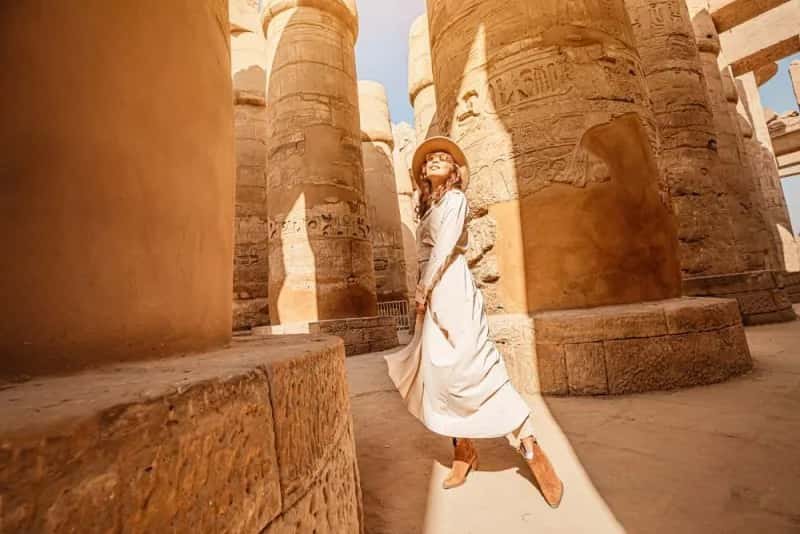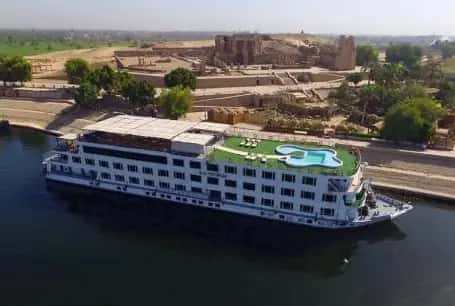
The Temple of Horus, also known as the Edfu Temple, is one of the most impressive and well-preserved ancient Egyptian temples. Located in the city of Edfu, on the west bank of the Nile River, this temple is dedicated to the falcon-headed god Horus, who was considered the protector of the pharaoh and the embodiment of kingship. The grandeur and magnificence of the Temple of Horus make it a must-visit destination for history enthusiasts and those interested in ancient Egyptian architecture.
The construction of the Temple of Horus dates back to the Ptolemaic period, specifically between 237 and 57 BCE. It was built on the site of a much older temple believed to have been constructed during the reign of Thutmose III. The Temple of Horus played a significant role in ancient Egyptian religious practices and was an important center for the worship of Horus. It also served as a place of pilgrimage and a site for various ceremonies and rituals.
The Temple of Horus was built by a succession of Ptolemaic pharaohs, including Ptolemy III, Ptolemy IV, Ptolemy V, and Ptolemy VI. These pharaohs sought to revive the worship of Horus and reinforce their legitimacy as rulers of Egypt. The construction of the temple spanned several generations, with each pharaoh adding their own contributions to the structure.
The construction of the Temple of Horus was motivated by both religious and political reasons. From a religious perspective, the temple was built to honor Horus, one of the most revered gods in ancient Egypt. It was believed that Horus would protect the pharaoh and ensure the prosperity and stability of the kingdom. Politically, the temple served as a symbol of the pharaoh's divine right to rule and his connection to the gods. It was a way for the Ptolemaic rulers to legitimize their authority and gain the support of the Egyptian population.
The Temple of Horus is a masterpiece of ancient Egyptian architecture. It follows the traditional layout of Egyptian temples, consisting of a series of halls, courtyards, and sanctuaries. The temple is surrounded by massive walls, adorned with intricate reliefs and hieroglyphs that depict scenes from Egyptian mythology and important historical events. The entrance of the temple is marked by a towering pylon, which leads to the first courtyard. Beyond the courtyard, there is a hypostyle hall with towering columns, followed by the inner sanctuary where the statue of Horus was kept.
The interior of the Temple of Horus is adorned with a plethora of symbols and decorations, each carrying its own significance. The most prominent symbol is the falcon, representing the god Horus. The falcon is depicted in various forms throughout the temple, emphasizing Horus' role as a protector and divine ruler. Other symbols include the ankh, the symbol of life, and the djed pillar, symbolizing stability and the backbone of the universe. The walls of the temple are covered in beautifully detailed reliefs, depicting mythological stories and rituals. These decorations not only served a decorative purpose but also conveyed important religious and ideological messages.
The Temple of Horus was a hub of religious activity in ancient Egypt, and numerous rituals and ceremonies were conducted within its sacred walls. These rituals were performed by priests, who were believed to be the intermediaries between the gods and the people. The most important ceremony was the daily ritual of the "Opening of the Mouth," which involved the priests awakening the statue of Horus and performing various purification rites. Other ceremonies included offerings, processions, and the reenactment of mythological events. These rituals were believed to maintain the cosmic order and ensure the prosperity of Egypt.
The inner sanctum of the Temple of Horus is the holiest part of the complex and was accessible only to the priests and pharaohs. It housed the shrine and the statue of Horus, which was considered the physical embodiment of the god. The shrine was surrounded by smaller chambers, where the priests performed rituals and stored sacred objects. The inner sanctum was a place of great reverence and was believed to be the dwelling place of the divine. Exploring this sacred space provides a unique insight into the religious beliefs and practices of ancient Egypt.
The Temple of Horus has been remarkably well-preserved over the centuries, thanks to its remote location and the protective walls that surrounded it. However, it has still required ongoing efforts to ensure its survival. In recent years, extensive restoration work has been carried out to repair damage caused by natural elements and human activities. This includes cleaning the reliefs, reinforcing the structures, and implementing measures to prevent further deterioration. The preservation of the Temple of Horus is crucial for future generations to appreciate and learn from this magnificent ancient monument.
If you're planning a visit to the Temple of Horus, here are some practical tips to make the most of your experience. The temple is open to visitors throughout the year, but it's advisable to check for any closures or special events before your visit. It's recommended to hire a knowledgeable guide who can provide insights into the history and significance of the temple. Remember to dress modestly and wear comfortable shoes, as there will be a lot of walking involved. Don't forget to bring water, sunscreen, and a hat, as the Egyptian sun can be intense. Lastly, be respectful of the sacredness of the temple and follow any instructions or regulations provided by the authorities.
While the Temple of Horus is undoubtedly the main attraction in Edfu, there are other notable sites worth exploring in the area. One such site is the Temple of Kom Ombo, located about 50 kilometers to the north. This unique temple is dedicated to two gods, Sobek and Horus the Elder, and offers a fascinating glimpse into the religious practices of ancient Egypt. Another nearby attraction is the city of Aswan, famous for its beautiful Nile River views, the Aswan Dam, and the stunning Philae Temple. Exploring these additional sites will provide a well-rounded understanding of the rich history and culture of the region.
The Temple of Horus in Edfu stands as an awe-inspiring testament to the grandeur and architectural genius of ancient Egypt. Its historical significance, intricate decorations, and sacred rituals make it an essential destination for anyone interested in exploring the wonders of the ancient world. Whether you're a history enthusiast, a spiritual seeker, or simply a curious traveler, the Temple of Horus will leave you in awe of the majesty and magnificence of ancient Egyptian civilization. Plan a visit to this remarkable temple and embark on a journey through time, where the past comes alive in all its splendor.
Book your trip to the Temple of Horus in Edfu today and experience the awe-inspiring magnificence of ancient Egypt firsthand!
“In my opinion, I believe a good writer makes content easy to read, and entertains the reader, making comprehension effortless.
By Kate Clark
Book this Egypt Budget Tour and enjoy 8 days Cairo and Nile cruise tour package at the best price with 5 star quality ac ...
$ 1139 | Per Person

Enjoy luxurious accommodation while sailing the Nile River between Luxor and Aswan aboard MS Farah nile cruise. Book Tod ...
$ 699 | Per Person

Nile Premium Cruise: Sail the Nile between Luxor and Aswan aboard the Ms Nile Premium Cruise. Live the magic of the past ...
$ 599 | Per Person